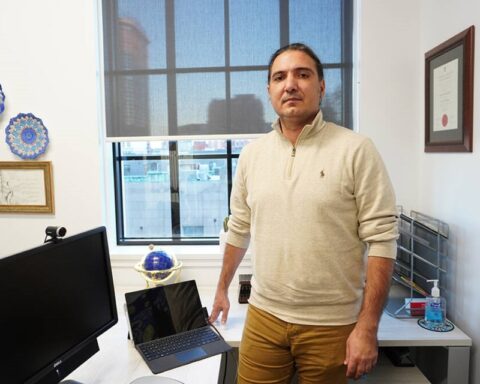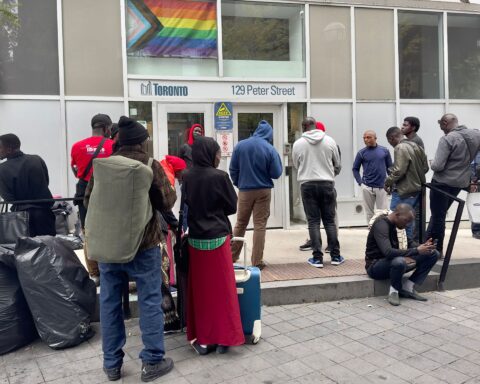Justin Trudeau and the Liberal party’s promise to bring 25,000 refugees to Canada by year-end was commended by refugee advocates during the election period, but many experts have stepped forward since Oct. 19 to say that political will is simply not enough.
“25,000 over two or three months? It can’t be done,” explained Chris Friesen, president of the Canadian Immigrant Settlement Sector Alliance (CISSA), in an interview with New Canadian Media.
Beyond concerns for the government’s large target number, refugee advocates cite problems with the current resources available in Canada to resettle this number of individuals.
Friesen says in order for the government to manage the resettlement movement in an effective and efficient way, it must consider what other efforts have to be made in Canada before significant numbers of refugees arrive.
“The risk of trying to do it may in fact be much more embarrassing than the embarrassment of having to say that a promise they made was not quite realistic.”
Gerry Van Kessel, who served as the Director General, Refugees from 1997 to 2001 with Citizenship and Immigration Canada (CIC) explained that even if the government were able to get the resources in place to begin moving people by Dec. 1, it would have to move 6,000 people per week to meet the end of year target.
“A thousand a day,” he stated. “Just think of the operation you would need in Canada to receive those people and to move them forward.”
He continued, “The risk of trying to do it may in fact be much more embarrassing than the embarrassment of having to say that a promise they made was not quite realistic.”
Holly Edwards, who also worked with CIC as the Director of Resettlement from 1994 to 1996, says that the scale of this intervention is unlike any she’s seen before.
“I don’t think we’ve ever taken numbers like that so quickly,” she said.
Learning from the past
While the number of refugees the government hopes to resettle is large, Friesen explained similar efforts have been made in years past to bring displaced persons to Canadian shores.
In 1972, 50,000 Ugandans of South Asian origin had been ordered out of the country by the new dictator, Idi Amin.
Pierre Elliott Trudeau in cooperation with the Aga Khan opened Canadian doors to approximately 4,420 refugees fleeing the country. The Canadian government had to move them out on a strict timeline of 60 days.
Another 1,278 would follow in the following months after stopping over to visit family in other countries.
In order to intervene in the 1972 crisis, Canadian officers processed applications in Uganda at the pace of 12 minutes a case.
“Canada could put in place a process that would allow internally-displaced Syrians to come to Canada, either as permanent resettlement or short-term visits.”
Similar efforts were made in 1999 when Van Kessel and his team airlifted 5,000 refugees from Kosovo to Canada on temporary visas within just three weeks. The refugees were processed on Canadian soil rather than forced to wait months, or even years, to make the journey to safety.
Friesen said similar measures must be taken today in what he called “the worst refugee crisis since the Second World War.”
“Canada could choose to expedite or put in place a process that would allow internally-displaced Syrians to come to Canada, either as permanent resettlement or short-term visits,” Friesen said.
Friesen also suggested that the government could issue more Temporary Resident Permits (TRPs) (formerly termed Minister’s Permits) to those who have been previously denied entry.
“There’s another real danger in all of this … The faster you move, the more shortcuts you take.”
While Van Kessel agreed that the situation is dire, he stressed moving forward with caution.
“There’s another real danger in all of this,” he said. “One of the things that’s going to be exceptionally difficult is the checking out the identities and backgrounds of the people who are going to want to come to Canada. The faster you move, the more shortcuts you take.”
Edwards agreed that the government must proceed carefully, but she hopes that prejudice does not win out against humanitarianism.
“Yes they are coming from an area where it’s more sensitive, but this doesn’t mean we shouldn’t take them,” she said.
Getting Canadian public involved
According to the CISSA, the Canadian people will have to make a significant personal commitment to successfully resettle the thousands of individuals fleeing conflict in Syria.
“We’re going to ask the public […] what they can offer, be it a room in a house, a suite, a bachelor’s suite, a house that’s sitting empty,” Friesen said. “We’re also going to call on them to volunteer and if they have the financial means we’re going to call on them to donate to our refugee sponsorship account.”
The CISSA will hold a press conference on Nov. 10 at which time the organization plans to call on dentists to provide health-care services and mental health professionals to provide free short-term trauma counselling support.
When asked whether he thought Canadians were going to meet these extraordinary demands, Friesen responded, “I’m totally optimistic. I’m totally hopeful.”
He continued, “Given the response that we’re receiving, that our colleagues are receiving, that the faith community is receiving, I have absolutely complete confidence that local residents will respond to this call.”





